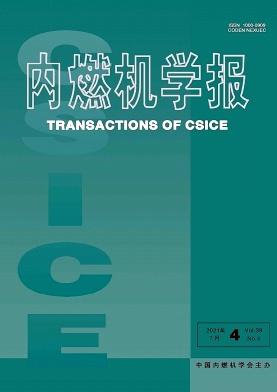考虑硫氧化物排放的电厂往复冰开采过程燃料和生态效率评价
Q4 Engineering
引用次数: 0
摘要
在Igor Parsadanov教授的复杂燃料和生态标准评估的计算方法和数学装置中,考虑到每小时从往复式内燃机排出的废气中大量排放的硫氧化物是一种有毒污染物,对其进行了改进。研究的目的是在考虑硫氧化物作为有毒污染物排放的情况下,得到表征柴油机开采过程生态安全水平的复杂燃料生态判据值。欧洲稳定周期(根据UENCE条例№49)被用作开发模型。在台架电机试验数据处理结果的基础上,以2Ch10.5/12自用拖拉机柴油机为例,获得了一组基于计算准则评价往复式内燃机电厂开采过程生态安全水平的初始数据。考虑硫氧化物排放,对规定的标准值进行了计算评价。已经检测到,考虑硫氧化物排放的基本变体的燃料生态准则值,即考虑汽车燃料和机油中硫含量的值以及燃烧机油的消耗量,典型的柴油2Ch10.5/12,与不考虑这种生态安全系数的变体不同,平均为6.6%。对于考虑到技术流体中硫含量的现代要求和现代往复式内燃机技术水平的选项,这种差异为0.5%。用最小二乘法用公式描述了辨识出的依赖关系。所获得结果的科学新颖性在于,Igor Parsadanov教授的方法得到了进一步的发展,该方法基于标准评估作为发电厂一部分的汽车拖拉机柴油发动机开发过程中的燃料生态效率,考虑到以RICE EG流为有毒污染物的全氟氧化物的大量小时排放,以及确定这种排放和这种污染物的可重性的方法在该数学应用的方向标准化稳定试验循环用仪器。本文章由计算机程序翻译,如有差异,请以英文原文为准。
CRITERIA-BASED ASSESSMENT OF FUEL AND ECOLOGICAL EFFICIENCY OF EXPLOITATION PROCESS OF RECIPROCATING ICE OF POWER PLANTS CONSIDERING OF EMISSION OF SULFUR OXIDES
In the calculation method and mathematical apparatus for assessment of the complex fuel and ecological criterion of Prof. Igor Parsadanov has been improved by considering the mass hourly emissions of sulfur oxides with the exhaust gases flow from the reciprocating ICE as a toxic pollutant. The purpose of the study is obtaining the values of complex fuel-ecological criterion that characterize the ecological safety level of diesel engine exploitation process considering the emissions of sulfur oxides as a toxic pollutant. The European Steady Cycle (according to UENCE Regulations № 49) was used as the exploitation model. A set of initial data has been obtained for the calculated criteria-based assessment of the ecological safety level of the exploitation process of power plants with a reciprocating ICE on the example of the autotractor diesel engine 2Ch10.5/12 based on the results of data processing of bench motor tests. The calculated assessment of specified criterion values considering sulfur oxides emissions was carried out. It has been detected that the value of the fuel-ecological criterion for the basic variant of considering the emissions of sulfur oxides, i.e. considering the values of sulfur content in motor fuels and oils and burning oil consumption, typical for diesel 2Ch10.5/12, differs for the variant that does not take into account this ecological safety factor, on average by 6.6 %. For the option that takes into account the modern requirements for the sulfur content in technical fluids and the technical level of modern reciprocating ICE, this difference is 0.5 %. The identified dependences are described by formulas by the method of least squares. The scientific novelty of the obtained results is that the approach of Prof. Igor Parsadanov received further development for criteria-based assessment of fuel-ecological efficiency of autotractor diesel engines exploitation process as a part of power plant considering the mass hourly emissions of fulfur oxides with RICE EG flow as the toxic pollutants and also methods for determination of such emissions and ponderability of such pollutants in direction of application of this mathematical apparatus for standardized steady testing cycles.
求助全文
通过发布文献求助,成功后即可免费获取论文全文。
去求助

 求助内容:
求助内容: 应助结果提醒方式:
应助结果提醒方式:


